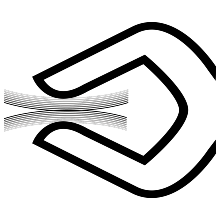Simulation-Driven Concepts and Design for Control and Automation for Robotic Devices Interacting with Soft Tissues
The interaction between (rigid) robotic devices and soft materials presents numerous challenging and largely unresolved problems. This is not limited to applications in which rigid robotic devices are directly interacting with soft tissues or in applications in which robotic devices handle easy-to-deform materials. Despite the multitude of applications, fundamental research and training of PhD students have mainly been carried out in a rather noninterdisciplinary way or are missing entirely. Based on long-lasting linkages and collaborations between the University of Stuttgart and the University of Auckland and based on the universities' synergistic expertise, we aim to establish an international and interdisciplinary environment that enhances our basic understanding and knowledge. Through the synergies in simulation technology, cyber-physical engineenng, robotic device technology, and biomedical engineering, we are able to form within this IRTG a highly interdisciplinary team focusing on
- simulation technologies (Focus Area A),
- automation and control (Focus Area B), and
- implementing/linking technical and biological concepts (Focus Area C).
The main idea is to develop new simulation technologies and sensors in order to assist the development of new control strategies and concepts for robotic devices interacting with soft tissues. We want significantly improve our understanding of next-generation robotic devices through training a new generation of PhD students in an international and interdisciplinary environment IRTG „Soft Tissue Robotics" in fields like simulation technology, computational modeling, sensing, robotics, and control methods. As this IRTG is based on the idea of linking and exchanging information between the virtual and the physical world, the knowledge and experience gained as part of this IRTG is invaluable for the future in a much broader sense. This exchange will become increasingly important, since it is the basis of any kind of digital engineering process. This is, for example, true for advancing automation infrastructure (e.g. cyber-physical systems), for human-machine-interfaces, or for aspects of (human) safety and (medical) ergonomics within the (meat, agriculture or automotive) industry. Graduates from this proposed IRTG will be highly valuable for their ability to contribute to the socio-economic goals of both Germany and New Zealand.
More information can be found on the project page.
Overview of the project structure:
- University of Stuttgart
Prof. Miriam Mehl (Institute for Parallel und Distributed Systems), 10 more researchers
Spokespersons: - University of Auckland (10 researchers)
Spokespersons:

Miriam Schulte
Prof. Dr. rer. nat. habil.Head of Institute

Benjamin Maier
M.Sc.Researcher




